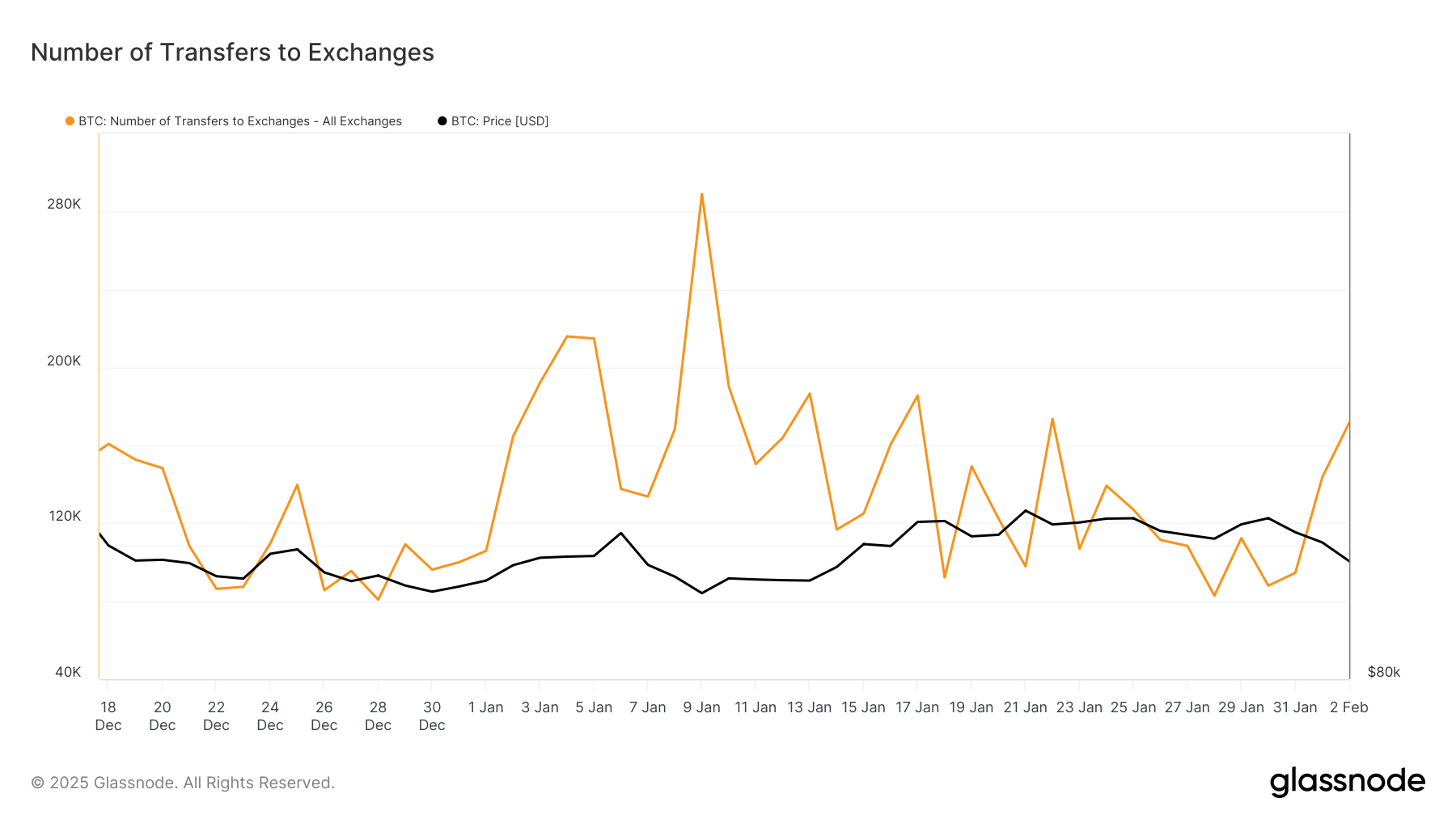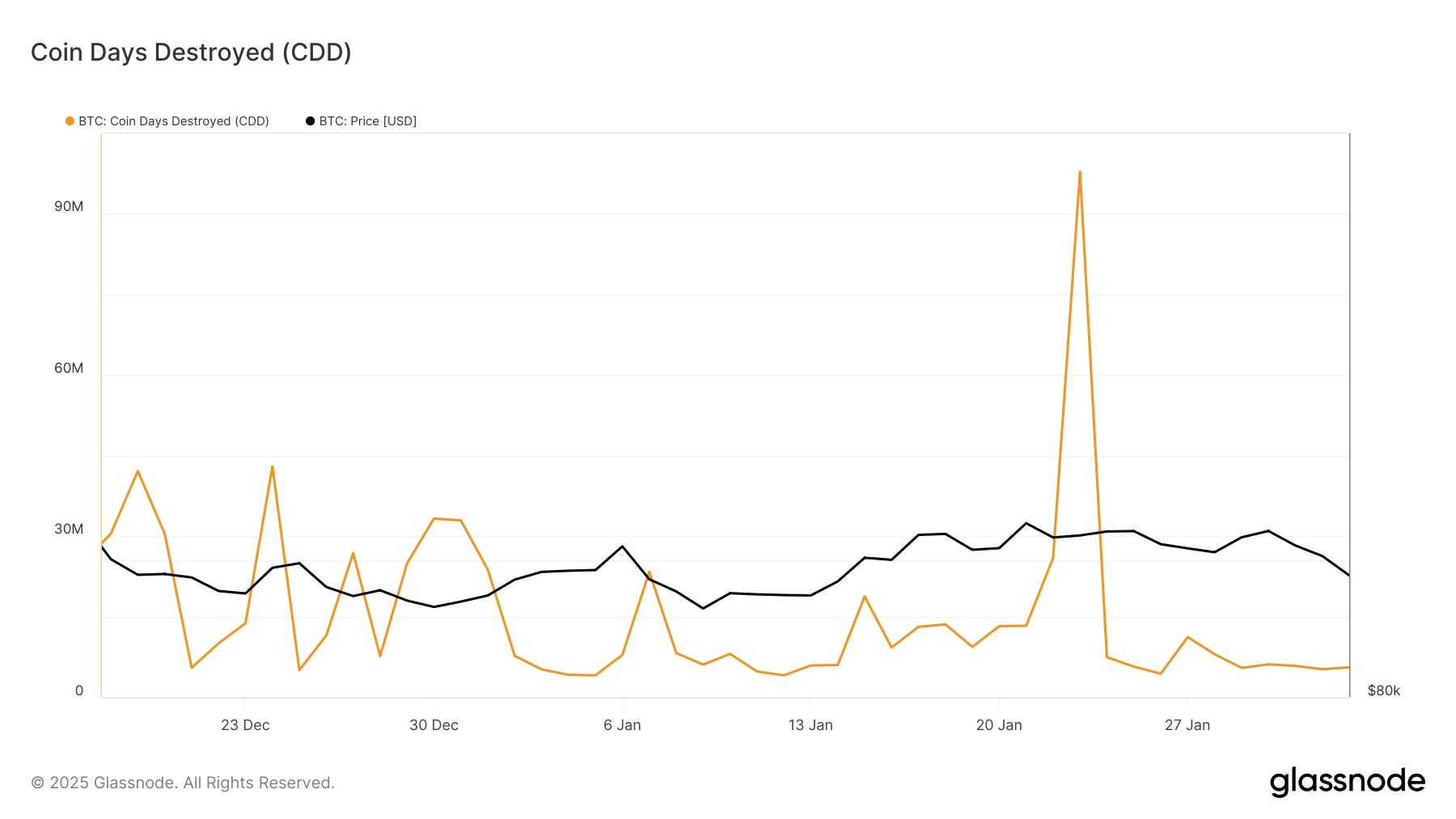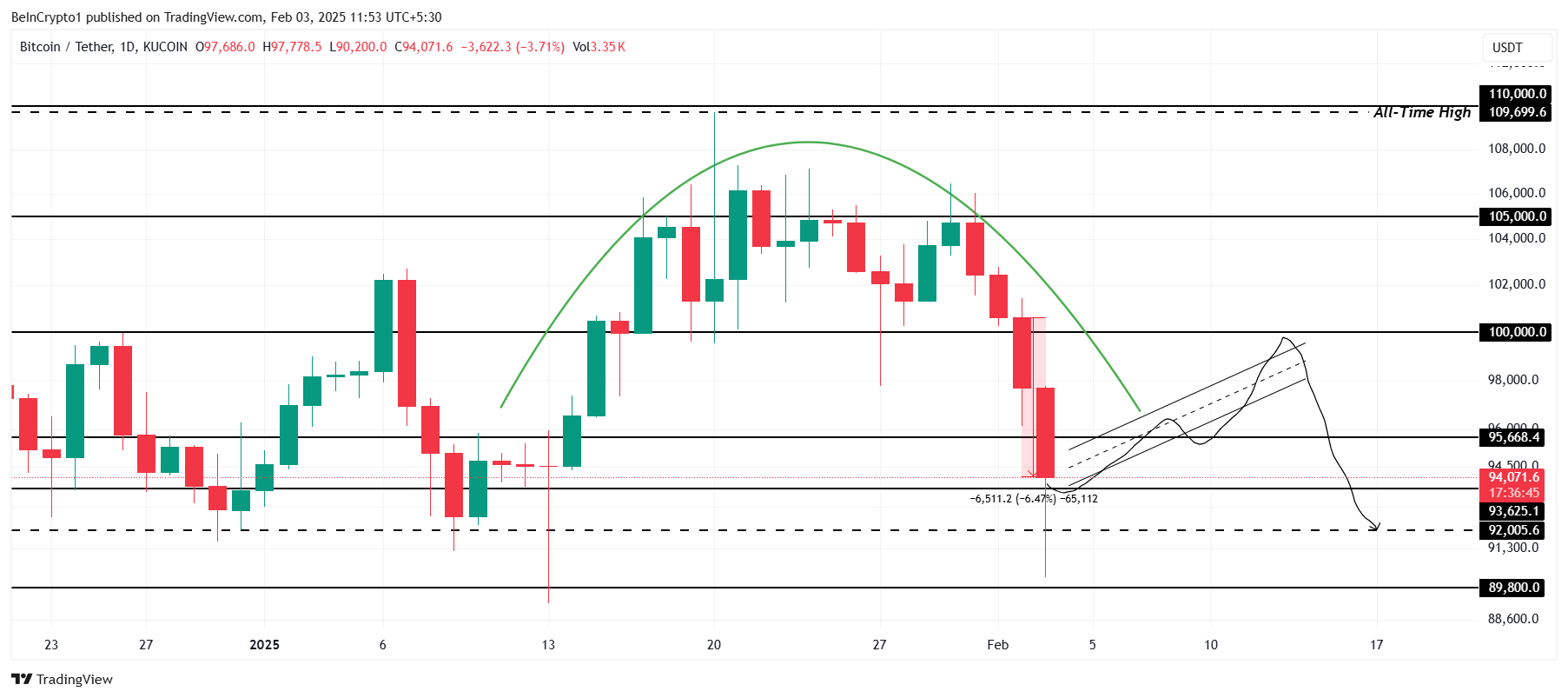| COINOTAG recommends • Exchange signup |
| 💹 Trade with pro tools |
| Fast execution, robust charts, clean risk controls. |
| 👉 Open account → |
| COINOTAG recommends • Exchange signup |
| 🚀 Smooth orders, clear control |
| Advanced order types and market depth in one view. |
| 👉 Create account → |
| COINOTAG recommends • Exchange signup |
| 📈 Clarity in volatile markets |
| Plan entries & exits, manage positions with discipline. |
| 👉 Sign up → |
| COINOTAG recommends • Exchange signup |
| ⚡ Speed, depth, reliability |
| Execute confidently when timing matters. |
| 👉 Open account → |
| COINOTAG recommends • Exchange signup |
| 🧭 A focused workflow for traders |
| Alerts, watchlists, and a repeatable process. |
| 👉 Get started → |
| COINOTAG recommends • Exchange signup |
| ✅ Data‑driven decisions |
| Focus on process—not noise. |
| 👉 Sign up → |
-
The recent drop in Bitcoin’s price has raised eyebrows among investors, as a 6.4% decline to $90,000 resulted in significant market activity.
-
Despite the turbulence, the Coin Days Destroyed metric indicates that long-term holders remain secure in their positions, hinting at a transient market shift.
-
According to Glassnode data, large movement of Bitcoin to exchanges may reflect panic selling, but long-term holders’ inactivity suggests resilience.
This article explores Bitcoin’s recent volatility, investor behavior, and the implications of long-term holding amidst market pessimism.
Panic Selling In Bitcoin Market
The cryptocurrency market experienced a sudden jolt in activity when Bitcoin fell significantly, leading to large-scale panic selling. Within 48 hours, over 80,000 BTC, equivalent to approximately $7.5 billion, was deposited into exchanges. This pattern typically indicates that investors are seeking liquidity as fear begins to propagate within the community.
However, the prospect of a long-term bearish trend cannot be concluded solely from this data. Panic-driven market actions often lead to temporary sell-offs rather than sustained declines in asset value. The quick movements of Bitcoin into exchanges do not necessarily forecast prolonged downturns.

| COINOTAG recommends • Professional traders group |
| 💎 Join a professional trading community |
| Work with senior traders, research‑backed setups, and risk‑first frameworks. |
| 👉 Join the group → |
| COINOTAG recommends • Professional traders group |
| 📊 Transparent performance, real process |
| Spot strategies with documented months of triple‑digit runs during strong trends; futures plans use defined R:R and sizing. |
| 👉 Get access → |
| COINOTAG recommends • Professional traders group |
| 🧭 Research → Plan → Execute |
| Daily levels, watchlists, and post‑trade reviews to build consistency. |
| 👉 Join now → |
| COINOTAG recommends • Professional traders group |
| 🛡️ Risk comes first |
| Sizing methods, invalidation rules, and R‑multiples baked into every plan. |
| 👉 Start today → |
| COINOTAG recommends • Professional traders group |
| 🧠 Learn the “why” behind each trade |
| Live breakdowns, playbooks, and framework‑first education. |
| 👉 Join the group → |
| COINOTAG recommends • Professional traders group |
| 🚀 Insider • APEX • INNER CIRCLE |
| Choose the depth you need—tools, coaching, and member rooms. |
| 👉 Explore tiers → |
The resurgence in transfer volumes can be linked to market sentiment shifts. As the Bitcoin price fluctuated, investors often resort to quick decisions influenced by momentary market conditions. Importantly, outcomes in Bitcoin trading should factor in behavioral economics insights, which indicate that investors might react swiftly without considering long-term implications.
Long-Term Holders Show Confidence
Investors focusing on the long term, known as Long-Term Holders (LTHs), have exhibited notably resilient behavior amid recent price fluctuations. The Coin Days Destroyed (CDD) metric suggests that the inactivity of LTHs indicates confidence in Bitcoin’s potential recovery. Whenever significant sell-offs occur, spikes in CDD are common, yet recent data shows minimal movement from long-term holders.
| COINOTAG recommends • Exchange signup |
| 📈 Clear interface, precise orders |
| Sharp entries & exits with actionable alerts. |
| 👉 Create free account → |
| COINOTAG recommends • Exchange signup |
| 🧠 Smarter tools. Better decisions. |
| Depth analytics and risk features in one view. |
| 👉 Sign up → |
| COINOTAG recommends • Exchange signup |
| 🎯 Take control of entries & exits |
| Set alerts, define stops, execute consistently. |
| 👉 Open account → |
| COINOTAG recommends • Exchange signup |
| 🛠️ From idea to execution |
| Turn setups into plans with practical order types. |
| 👉 Join now → |
| COINOTAG recommends • Exchange signup |
| 📋 Trade your plan |
| Watchlists and routing that support focus. |
| 👉 Get started → |
| COINOTAG recommends • Exchange signup |
| 📊 Precision without the noise |
| Data‑first workflows for active traders. |
| 👉 Sign up → |
This lack of activity points to a prevailing belief that the current drop is not indicative of a broader market collapse. LTHs tend to hold onto their assets during downturns, opting for a wait-and-see strategy. This behavior reflects a broader understanding that market cycles typically recover after periods of volatility, suggesting that current movements could be short-lived.

| COINOTAG recommends • Traders club |
| ⚡ Futures with discipline |
| Defined R:R, pre‑set invalidation, execution checklists. |
| 👉 Join the club → |
| COINOTAG recommends • Traders club |
| 🎯 Spot strategies that compound |
| Momentum & accumulation frameworks managed with clear risk. |
| 👉 Get access → |
| COINOTAG recommends • Traders club |
| 🏛️ APEX tier for serious traders |
| Deep dives, analyst Q&A, and accountability sprints. |
| 👉 Explore APEX → |
| COINOTAG recommends • Traders club |
| 📈 Real‑time market structure |
| Key levels, liquidity zones, and actionable context. |
| 👉 Join now → |
| COINOTAG recommends • Traders club |
| 🔔 Smart alerts, not noise |
| Context‑rich notifications tied to plans and risk—never hype. |
| 👉 Get access → |
| COINOTAG recommends • Traders club |
| 🤝 Peer review & coaching |
| Hands‑on feedback that sharpens execution and risk control. |
| 👉 Join the club → |
BTC Price Outlook: The Potential for Recovery
The recent market patterns are indicating a possible transition despite the bearish sentiment surrounding Bitcoin. The formation of a rounding top pattern, although presently bearish, might develop into an inverse cup and handle setup if Bitcoin gains traction at existing support levels around $93,625.
Success in reclaiming the $100,000 support level could reinvigorate investor confidence and catalyze a further price rally. Analysts predict that if Bitcoin moves beyond this critical threshold, it could reclaim the $105,000 mark, providing a solid counterpoint to recent declines.

In summary, while Bitcoin’s market appears turbulent, the underlying trends suggest a complex interplay between short-term reactions and long-term holding strategies. If the positive trajectory can be established, it will signify more than just recovery; it could reinstate long-term bullish sentiment within the cryptocurrency space.
| COINOTAG recommends • Exchange signup |
| 📈 Clear control for futures |
| Sizing, stops, and scenario planning tools. |
| 👉 Open futures account → |
| COINOTAG recommends • Exchange signup |
| 🧩 Structure your futures trades |
| Define entries & exits with advanced orders. |
| 👉 Sign up → |
| COINOTAG recommends • Exchange signup |
| 🛡️ Control volatility |
| Automate alerts and manage positions with discipline. |
| 👉 Get started → |
| COINOTAG recommends • Exchange signup |
| ⚙️ Execution you can rely on |
| Fast routing and meaningful depth insights. |
| 👉 Create account → |
| COINOTAG recommends • Exchange signup |
| 📒 Plan. Execute. Review. |
| Frameworks for consistent decision‑making. |
| 👉 Join now → |
| COINOTAG recommends • Exchange signup |
| 🧩 Choose clarity over complexity |
| Actionable, pro‑grade tools—no fluff. |
| 👉 Open account → |
Conclusion
The current climate in Bitcoin is marked by uncertainty fueled by rapid price fluctuations and significant movements of assets to exchanges. However, the resilience of long-term holders, coupled with the potential for price recovery, highlights the dynamic nature of cryptocurrency investments. Observers should remain cautious yet optimistic, as the market shows signs of consolidating support that could lead to a rebound in the near future.
| COINOTAG recommends • Members‑only research |
| 📌 Curated setups, clearly explained |
| Entry, invalidation, targets, and R:R defined before execution. |
| 👉 Get access → |
| COINOTAG recommends • Members‑only research |
| 🧠 Data‑led decision making |
| Technical + flow + context synthesized into actionable plans. |
| 👉 Join now → |
| COINOTAG recommends • Members‑only research |
| 🧱 Consistency over hype |
| Repeatable rules, realistic expectations, and a calmer mindset. |
| 👉 Get access → |
| COINOTAG recommends • Members‑only research |
| 🕒 Patience is an edge |
| Wait for confirmation and manage risk with checklists. |
| 👉 Join now → |
| COINOTAG recommends • Members‑only research |
| 💼 Professional mentorship |
| Guidance from seasoned traders and structured feedback loops. |
| 👉 Get access → |
| COINOTAG recommends • Members‑only research |
| 🧮 Track • Review • Improve |
| Documented PnL tracking and post‑mortems to accelerate learning. |
| 👉 Join now → |









